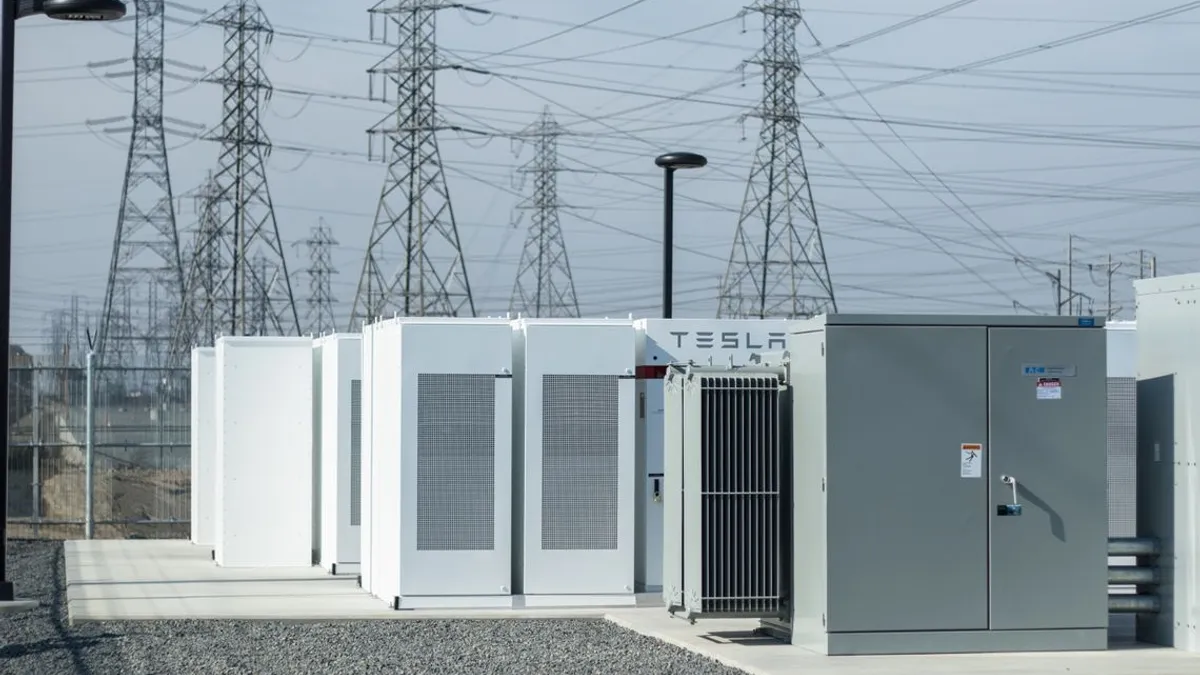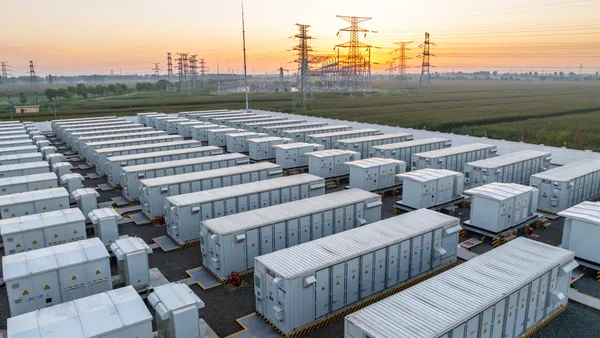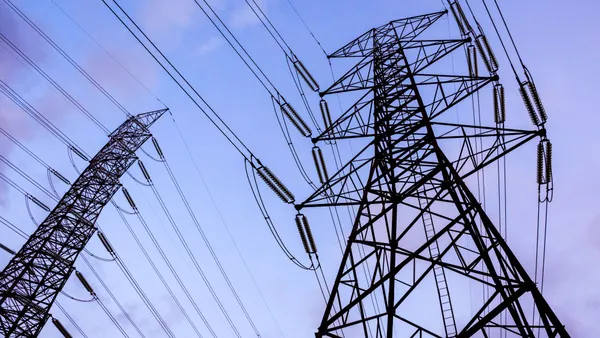Dive Brief:
-
The largest battery storage resource in the country was connected to the California Independent System Operator (CAISO) grid in June, adding 62.5 MW of storage to the operator's system, CAISO announced on Monday.
-
The resource is the first phase of LS Power Group's Gateway energy storage project, in San Diego County. The entire 250 MW project is expected to come online in August, at which point it will reportedly be the largest battery storage system operating in the world.
-
The development represents "a turning point for storage on our system," CAISO President and CEO Steve Berberich said in a press release. CAISO expects other large deployments — like 300 MW from Vistra Energy's Moss Landing project — to come online in the next few years.
Dive Insight:
Around 170 battery storage systems larger than 1 MW are currently operating in the U.S., but the 62.5 MW first phase of the Gateway project is already the largest in the country, CAISO said in a press release.
Storage resources are becoming more competitive, but installations are really being driven by carbon reduction and clean energy goals, Mohit Chhabra, senior scientist at the Natural Resources Defense Council's climate and clean energy program, told Utility Dive.
"So states that have those strong policy mandates, like California, is where you'll see these pop up regularly," he explained.
CAISO's grid currently has a little over 216 MW of operational commercial storage capacity, but the operator expects that the figure will rise to 923 MW by the end of the year if all planned projects meet their deadlines — six times the 136 MW that was online at the beginning of 2020. According to Berberich, reaching California's goal of a carbon-free grid by 2045 could require as much as 15,000 MW of battery storage.
"For many years, we have understood the promise of storage to take oversupply off the grid in the middle of the day and deliver it at the end of the day when the need is great. With some of these large-capacity projects coming online, 2020 will be the transition year for battery storage to play a critical role in integrating renewables in the future," he said in the press release.
Around a 1,000 MW of storage capacity is scheduled to come online in California over the next two or three years, Jin Noh, policy manager at the California Energy Storage Alliance, told Utility Dive — signaling "the next phase of the market's growth."
"I think it will be a test, and we're going to go through some growing pains and learn best how to actually operate these storage resources in the market, since a lot of that operational experience to date has been a little bit more limited," he said.
Many of the projects that are coming online now have already been contracted, according to Noh; the Gateway project, for instance, is included in a 423 MW procurement package announced recently by Pacific Gas & Electric, as well as a 770 MW storage procurement by Southern California Edison.
But many other projects that are starting to go into the queue are positioning themselves for future procurement needs, he added, since projects generally require a five to six-year lead time.
The battery project is a "great step" towards securing the storage capacity that California needs, Julia Prochnik, executive director of the state's Long Duration Energy Storage Association, said in an emailed statement.
"Investing in a diverse mix of energy storage solutions, including both short duration and long duration technologies, is essential for meeting the state's clean energy goals. It is also an important tool for putting Californians back to work while building a more reliable energy grid for the future," she added.
Jason Burwen, vice president of policy at the Energy Storage Association, said in a statement that the announcement reflects the relentless movement of energy storage into mainstream electric system operations.
"It's also important to note that this project is a standalone battery storage system. While there can be benefits to integrating storage directly with generation as a 'hybrid resource,' the LS Power storage system in CAISO is a reminder that effective grid operations can utilize the flexibility of storage as a standalone asset," Burwen said.















